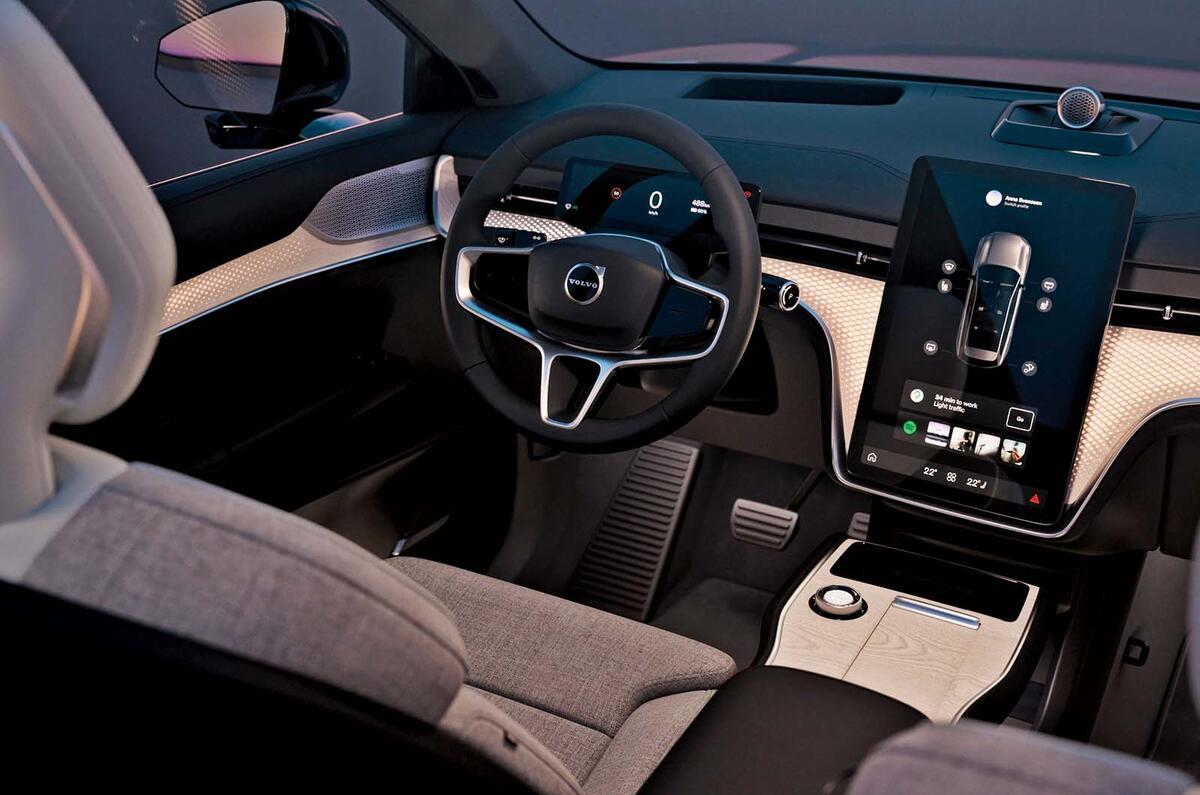Volvo has drawn attention to the design possibilities of new-technology LEDs with the news that the EX90 has “near-sunlight” lighting.
Time was when a bulb was a bulb, and as long as you could more or less find your way around a car interior in the dark, that was good enough. Now designers are seizing on the fact that the latest LEDs are so much more sophisticated than that to deliver (to use the lighting industry’s latest buzzword) a “human-centric experience”.
Sounds great, so what is it? In the case of the EX90 (the Polestar 3 gets the same technology), the experience is delivered by a suite of 72 Sunlike LEDs made by Seoul Semiconductor. Without getting too much into the esoteric design speak, the idea is to create a level and colour of interior light that goes beyond mere visibility and enters the territory of mood enhancement.
Volvo’s design team says it wants to bring some artificial sunshine into an EX90 owner’s day on dark, gloomy mornings. Whereas old-school incandescent bulbs merely produced light, modern non-flickering LED technology is available in a much wider range of colour temperatures.
Colour temperature isn’t a new thing and is something that every photographer will be aware of, especially when photographing things in artificial light. In simple terms, colour temperature relates to how cool (blue) or warm (yellow) a light source is.
It’s measured in degrees on the Kelvin scale, so there’s an objective measurement of it as well as subjective. The smaller the number, the warmer the colour, so 2500K is very warm and 6500K is daylight.
Sunlike says its LEDs have what it calls Natural Spectrum Technology, which reduces the amount of blue light and delivers a spectrum that’s the same as that produced by natural sunlight. Natural daylight has a full visible spectrum evenly distributed, beginning with the shortest wavelength (violet) at about 380nm (nanometres) through to red at around 775nm.
While there were older lighting technologies badged ‘daylight’, often the spectrum wasn’t, with less of the longer-wavelength red light than the real deal.
Why does any of this matter? From a design point of view, it affects how the colour of materials is perceived, which is why checking colour swatches in a showroom somewhere usually involves running to the nearest window to get an accurate picture. The ability of a light source to reveal the colour of a surface or fabric accurately is measurable too and called the colour rendering index.
The bottom line is that designers believe achieving a natural spectrum promotes a feeling of wellbeing and enhances levels of serotonin (the feel-good hormone) in the same way as sunlight.
The latest LEDs emulating natural light are already being used in a variety of buildings where natural light is important, so why not cars too?




Join the debate
Add your comment
Manufacturers should put as much effort into the temperature of their external lighting as Volvo are doing with this internal stuff. Using a warmer white light for LED headlamps and DRLs would result in less irritation for oncoming drivers than the cold, extremely bright white light we have to put up with at present.
Agree also for the driver. I just changed my mountain bike lights from a brilliant white to ones that are more daylight - makes it easier on the eyes and also helps with depth perception. Still, like most of these ideas, will be in use elsewhere for years before it finally makes it as a 'great new idea' for a car manufacturer in Autocar!
What next?, a little synthesised voice saying it's noticed your driving too aggressively,suggests you slow down or stop and have a brew?
Here here. What happens when these unnecessary systems fail and the car fails it's MOT? ££££
First hydraulic brakes, now this! When will it end?!?!?!
What a great idea. Most car interiors are pretty dingy places, despite "mood lighting". Sunshine lighting would really add a lot of wellbeing in the uk
Polestars models will be even more dingy as the ones without rear windscreens come on stream.